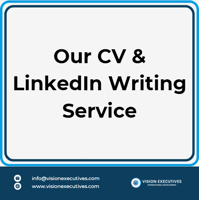𝐈𝐭𝐚𝐥𝐢𝐚 𝐈𝐧𝐝𝐞𝐩𝐞𝐧𝐝𝐞𝐧𝐭'𝐬 𝐀𝐈-𝐏𝐨𝐰𝐞𝐫𝐞𝐝 𝐄𝐲𝐞𝐰𝐞𝐚𝐫 𝐂𝐚𝐦𝐩𝐚𝐢𝐠𝐧: 𝐀...
How AI can be utilised in your eyecare practice
Current Practices in Action
In the dynamic field of eyecare, artificial intelligence (AI) has emerged as a transformative force, reshaping diagnostics and patient care. Globally, eyecare establishments are adopting AI, exemplified by platforms like Altris AI , who have become a prominent choice for numerous eyecare establishments, leveraging artificial intelligence (AI) to enhance OCT scan analysis. As an FDA-cleared platform, Altris AI specialises in detecting over 70 retina pathologies and biomarkers, making it a valuable addition to the diagnostic toolkit of optometry centres and ophthalmic clinics. This advanced system is proficient in identifying various conditions such as dry and wet AMD, Diabetic Retinopathy, Diabetic Macular Edema, Geographic Atrophy, among others. The core objective of the Altris AI team is to optimize the efficiency of OCT workflows, accomplished through the implementation of a unique AI algorithm. This algorithm selectively identifies pathological OCT scans and conducts a comprehensive analysis, identifying the presence of 70+ retina pathologies and biomarkers. Maria Znamenska, MD, PhD 🇺🇦 in Ophthalmology and Medical Director of Atris AI, expressed her enthusiasm for the platform, stating, "At Atris AI, we are excited to present a new approach to working with OCT – faster, more informative, and with greater control. Our dedicated team of retina experts and IT specialists has tirelessly developed the AI-powered platform that sets higher standards in the eye care industry, ultimately improving patient outcomes."
In this shift towards innovation, several leading eyecare companies have successfully integrated artificial intelligence (AI) into their practises, revolutionizing diagnostics and patient care. The EyeArt AI eye screening system, developed by Eyenuk, Inc. , enables real-time diabetic retinopathy (DR) screening during a regular eye exam. This deep learning-based classification tool has demonstrated impressive sensitivity (95.5%) and specificity (85.0%) for detecting referable diabetic retinopathy, making it a valuable asset for physicians.
Topcon Healthcare Europe have also embraced AI by integrating it into its diagnostic imaging solutions, specifically designed to aid in the analysis of retinal images and optical coherence tomography (OCT) scans. Meanwhile, companies like Digital Diagnostics and Optos have achieved significant milestones of autonomous AI systems, with the development of IDx-DR, the first FDA-cleared autonomous AI system for detecting diabetic retinopathy in retinal images and Optos’ retinal imaging devices, incorporating AI to facilitate the analysis and interpretation of high-resolution images, both contributing to the transformative impact of AI in the optical field.
ZEISS Medical Technology, a key player in ophthalmic imaging, is actively engaging in developing AI solutions to enhance precision in diagnostics and streamline workflow. Their commitment reflects the progressive impact of AI in efficiently and accurately detecting critical eye conditions. These advancements empower eyecare professionals to make informed decisions during routine examinations, ultimately improving patient outcomes and elevating the standard of care in optical practises.
Adding to this wave of innovation, OrCam Technologies Inc. have launched an augmented artificial intelligence (AI) companion to complement its MyEye device, specially created to assist individuals with visual impairment. The MyEye device, a wearable assistive technology, harnesses AI capabilities to audibly read text from both digital and printed sources for the user. Designed to be attachable to “virtually any pair of glasses” it caters to the needs of individuals who are blind or visually impaired. The device also incorporates Smart Reading, an additional feature that allows users to locate specific information using voice commands.
Upcoming Innovations to Anticipate
As we anticipate the future of eyecare, promising advancements in artificial intelligence (AI) are on the horizon. A recent study from Yonsei University College of Medicine in South Korea delves into the effectiveness of an innovative AI system, employing deep learning to identify paediatric autism through the analysis of retinal abnormalities. The single-centre diagnostic study prospectively collected retinal photographs of individuals with autism spectrum disorder (ASD) and retrospectively gathered those of age and sex-matched individuals with typical development. The study aimed to assess the AI system’s proficiency in differentiating between ASD and typical development, as well as its capability to distinguish between individuals with severe and mild to moderate ASD.
Shifting our focus to another significant study, John Hopkins University Children’s Centre explored the impact of autonomous AI-driven diabetic eye exams on children and youth with diabetes. This research revealed a substantial enhancement in completion rates of screening, crucial for preventing diabetes-related eye diseases (DED) that could lead to blindness. Notably, the AI-driven technology employed in these exams demonstrated the potential to address “care gaps” among racial and ethnic minority youth with diabetes. This holds particular significance for populations historically burdened with elevated rates of DED and limited access or compliance with regular eye damage screenings.
Furthermore, Eyeonic has introduced a ground breaking solution with a cloud-based, AI-powered platform offering online visual field testing. This innovative platform enables users to conduct visual field tests conveniently on any computer or tablet, detecting peripheral vision loss. The technology generates easily interpretable results for optometrists or ophthalmologists to share with patients. Notably, this revolutionary solution eliminates the need for specialised hardware, reducing costs and enhancing accessibility to visual field testing. Eyeonic’s innovation signifies a transformative shift in the landscape of optometry and ophthalmology services, breaking down testing barriers and ushering in a new era of enhanced patient care.


